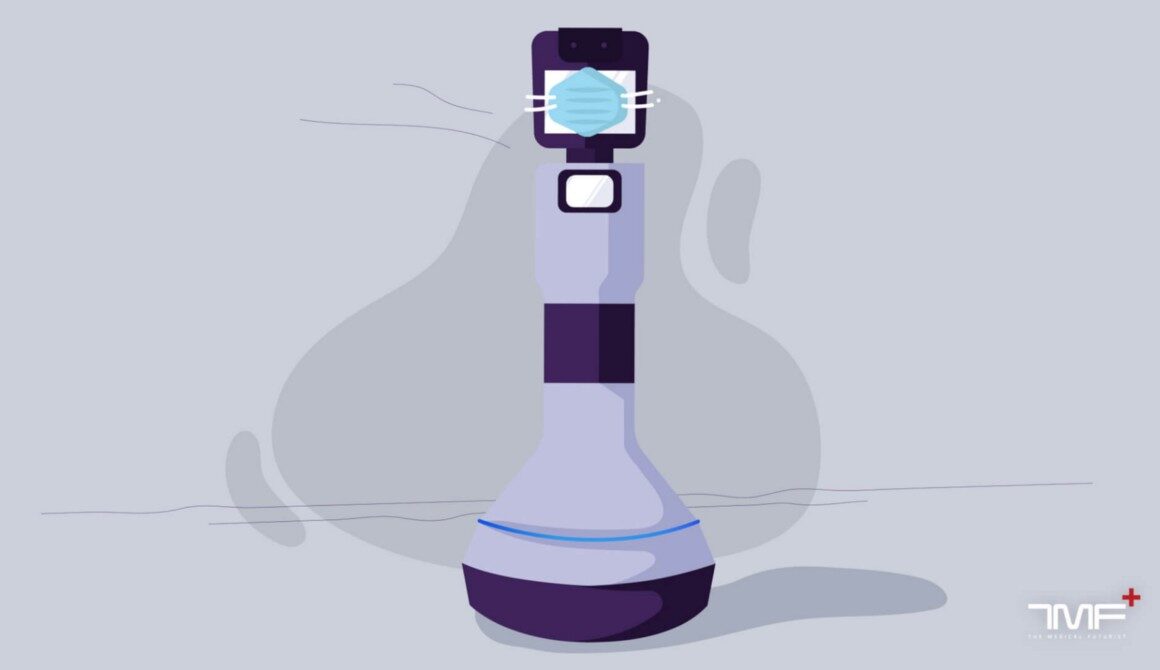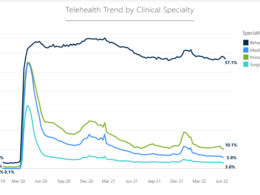This is a republication of the article “COVID-19 and the rise of Telemedicine”, with the title above.
The Medical Futurist
31 March 2020
Telemedicine has not had the success story it had hoped to achieve.
The method, involving remote health-related services such as monitoring, advice and education between doctors and patients online over a secure connection, promised to be at the forefront of the future of medicine.
It promised to make state-of-the-art healthcare more accessible without the need to wait hours in line.
However, the reality is that only a handful of countries and regions adopted the concept, but telemedicine remains merely a concept for many.
In fact, a study showed that in the U.S. alone, 82 percent of consumers do not use such services.
This sad reality can be attributed to the lack of improper infrastructure to support it and to the lack of awareness.
Another factor is that cultural aspects haven’t been taken into consideration, like it’s usually the case in digital health.
Moreover, some even question its reliability and effectiveness.
Put to blame is the very quality of these services. A study with researchers posing as patients found that remote doctors across 16 different telemedicine apps misdiagnosed serious skin conditions.
What’s concerning is that some doctors operating through these services didn’t even have a license to practice in their patients’ regions.
Such issues even led to reimbursement questions.
But then came 2020 and the COVID-19 pandemic.
This ongoing global crisis forced healthcare institutions and regulatory bodies to turn to alternative ways of providing healthcare while limiting exposure to the virus.
And telemedicine is presenting itself as the ideal solution to these woes by limiting patient displacement to hospitals, allocating hospital capacity to important cases, all while curbing the disease’s spread.
Let’s see how the COVID-19 forced the healthcare world to do a 180° on telemedicine and what awaits this technology in the future.
Let’s see how the COVID-19 forced the healthcare world to do a 180° on telemedicine and what awaits this technology in the future.
And then came COVID-19…
Just a couple of months ago, no one could have predicted the extent of the COVID-19’s effect on society. Entire countries are under lockdown in a bid to limit the spread of the virus.
Digital health fares as an adequate solution in these circumstances.
Robots help in monitoring infected patients to limit contact with medical personnel, deliver medical supplies and disinfect wards.
Digital health fares as an adequate solution in these circumstances.
Robots help in monitoring infected patients to limit contact with medical personnel, deliver medical supplies and disinfect wards.
As companies and even schools adopt the work-from-home solution, remote consultation is also becoming an increasingly attractive option in healthcare.
The COVID-19 pandemic brought telemedicine into a new light.
As medical professionals need to stay healthy and disease-free, the need for remote technologies skyrocketed.
Both the CDC and WHO are advocating for telemedicine to monitor patients and reduce risks of them spreading the virus by traveling to hospitals.
The COVID-19 pandemic brought telemedicine into a new light.
As medical professionals need to stay healthy and disease-free, the need for remote technologies skyrocketed.
Both the CDC and WHO are advocating for telemedicine to monitor patients and reduce risks of them spreading the virus by traveling to hospitals.
Following this lead, The Academy of Family Physicians and the American Medical Association (AMA) released related guidelines.
The US Government also took significant steps in order to expand telemedicine services.
We’ve also seen practical examples like the Bergen New Bridge Medical Center dedicating a COVID-19 telemedicine service. “These are the moments that we were built for,” said Dr. Jason Tibbels, an executive with telemedicine provider Teladoc Health.
A ready-made option
“Telehealth is bridging the gap between people, physicians and health systems, enabling everyone, especially symptomatic patients, to stay at home and communicate with physicians through virtual channels, helping to reduce the spread of the virus to mass populations and the medical staff on the frontlines,” said Dedi Gilad, CEO and co-founder of Tyto Care, a telemedicine technology company.
Dedi Gilad’s quote greatly summarizes the importance of telemedicine under the threat of COVID-19.
It’s an adequate option to lift the burden from existing healthcare infrastructures.
It’s a readily available solution that allows those following treatment for other conditions to continue doing so or even filter out potential COVID-19 cases remotely.
In fact, telemedicine companies are evolving with the times.
Companies like PlushCare and Everlywell plan to release at-home COVID-19 testing kits. This can neatly tie in with their existing remote consultation services.
Others like Doctor on Demand and HeyDoctor offer free coronavirus risk assessments. These then direct high-risk patients towards a video or phone consultation with a physician.

Overload
While existing telemedicine services are ready-made options to help manage this pandemic, prior to the current situation, they were not widely adopted.
This is leading to an overload influx towards these solutions.
Before the pandemic, only 1 in 10 US patients used telemedicine services, according to a J.D. Power survey. Now the tides have drastically changed.
Stakeholders and patients alike are now scrambling to find a telemedicine service, a sector which is facing an unprecedented demand.
- Appointments via PlushCare are up by 70%.
- Amwell, another service, had its app use increase by a whopping 158% in the US since January.
“Any technology infrastructure experiencing such a large increase in demand would experience impact,” said Holly Spring, Amwell vice-president of corporate communications.

Conversely, telemedicine services have the potential to overload hospitals.
This is because of their poor adoption, as not all institutions have the equipment to deliver remote consultations and allocate the required staff and resources.
In a pandemic where the medical staff itself gets infected and quarantined, the pool of available providers is even smaller. But even this is a two-sided coin.
“By deploying advanced telehealth solutions, physicians are expanding their reach — even if quarantined — with the ability to remotely examine and diagnose more patients in a shorter amount of time, minimizing the number of patients entering hospitals and medical facilities,” said Gilad of Tyto Care. Telemedicine will significantly reduce additional pressure, he added.
In a bubble?
A recent paper from The American Journal of Managed Care discussed the need for and challenges to incorporating telemedicine amidst the COVID-19 pandemic.
It concluded that “although certain legal, regulatory, and reimbursement challenges remain, the COVID-19 outbreak may be the right impetus for lawmakers and regulatory agencies to promulgate further measures that facilitate more widespread adoption of telemedicine.”
It might be the case that telemedicine is experiencing a bubble which will burst post-COVID-19.
Under normal circumstances, regulations and pricing issues might stifle its growth as it has been the case so far. The technology might recede back into oblivion, only to rise up during the next outbreak.

However, another global public health crisis is likely to happen.
In less than a decade we’ve seen the likes of MERS, Ebola, Zika virus and COVID-19. The latest one has shown the importance of telemedicine and key stakeholders should embrace the technology and make it an integral part of the healthcare system.
This will help work towards the digital health agenda while also preparing for an eventual emergency.
Originally published at https://medicalfuturist.com












